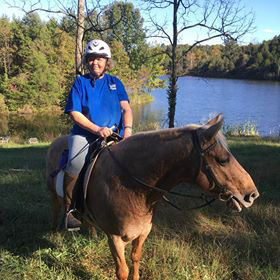You have probably heard of or tried kegel exercise. Kegel exercise consists of contracting and releasing the muscles in the lowest part of the trunk, in the pelvis, a group of muscles called the pelvic floor. This sling of muscles that connect from the tailbone to the pubic bone, and between the two sitting bones, acts as an integral participant in many functions, such as child birth, continence, breathing and balance. They work in coordination with the deep muscles of the back, inner thighs, hips, abdominals and the muscles for breathing.
So where did kegel exercise originate? In 1948 Arnold Kegel introduced exercises to strengthen the muscles of the pelvic floor. Was Arnold on the right track? Absolutely, but there is so much more to pelvic floor awareness and strengthening than just kegels. Here are three tips to help you expand your idea of kegels, and to sense more and get more out of your pelvic floor contractions. Be sure to follow the advice of your doctor or physical therapist to ensure that kegel exercise or pelvic floor contractions are right for you.
- Release
Often the contraction phase is emphasized when doing pelvic floor contractions. Of course this is important, but for a muscle to contract, it has to have a period where it lets go and lengthens so it can then shorten again. You should always alternate the muscle contractions with a phase of letting go, of relaxation, and this phase should be as long as the contraction, or even longer.
- Breathe
The autonomic nervous system helps regulate all the reflexes and several of these reflexes are finely coordinated with the activity of the pelvic floor muscles and the organs. This explains why, for example, stress or anxiety can have an effect on the healthy functioning of the pelvic floor, such as the function of continence. While performing a pelvic floor exercise, during both the contraction and the relaxation phase you should breathe easily. Breathing while doing pelvic floor exercises, as well as breathing exercises performed on their own, can help calm an autonomic system in distress.
- Coordinate
Since the pelvic floor does not act alone, improving the awareness and strength of the pelvic floor begins with learning to contract and relax all of the pelvic floor and to coordinate this with movements of the whole body. This can be learned by applying the Feldenkrais Method® to pelvic floor exercises. The Feldenkrais Method can help you develop awareness of your body, your movement and yourself. Rather than beginning by isolating the pelvic floor, in exercises with the Feldenkrais Method you begin by doing a gentle whole body movement and then layer in contractions of the pelvic floor. This way of learning recreates how you use the pelvic floor in daily life, which is in synergy with other muscles.
If you want to sense more and get more out of pelvic floor exercises, remember these three tips “Release, Breathe and Coordinate.” As Deborah J. Bowes, Doctor of Physical Therapy and Guild Certified Feldenkrais Trainer states in her article The Practical Pelvic Floor: what is it, where is it, how does it work and making it work better, “Improved awareness of the pelvic floor leads to better control and more functional strength. Functional muscle strength requires both the ability to relax and contract. There’s a unique combination of flexibility, timing, breathing and appropriate use of the whole body.”
Dorothy Henning is a Guild Certified Feldenkrais Practitioner and will be holding a Pelvic Floor Workshop for Women based on the Feldenkrais Method, February 8 and 9, 2019 in Louisville, Kentucky, at her studio, Integrative Movement. If you have questions or would like to discuss more to see if this workshop is for you, contact Dorothy.


